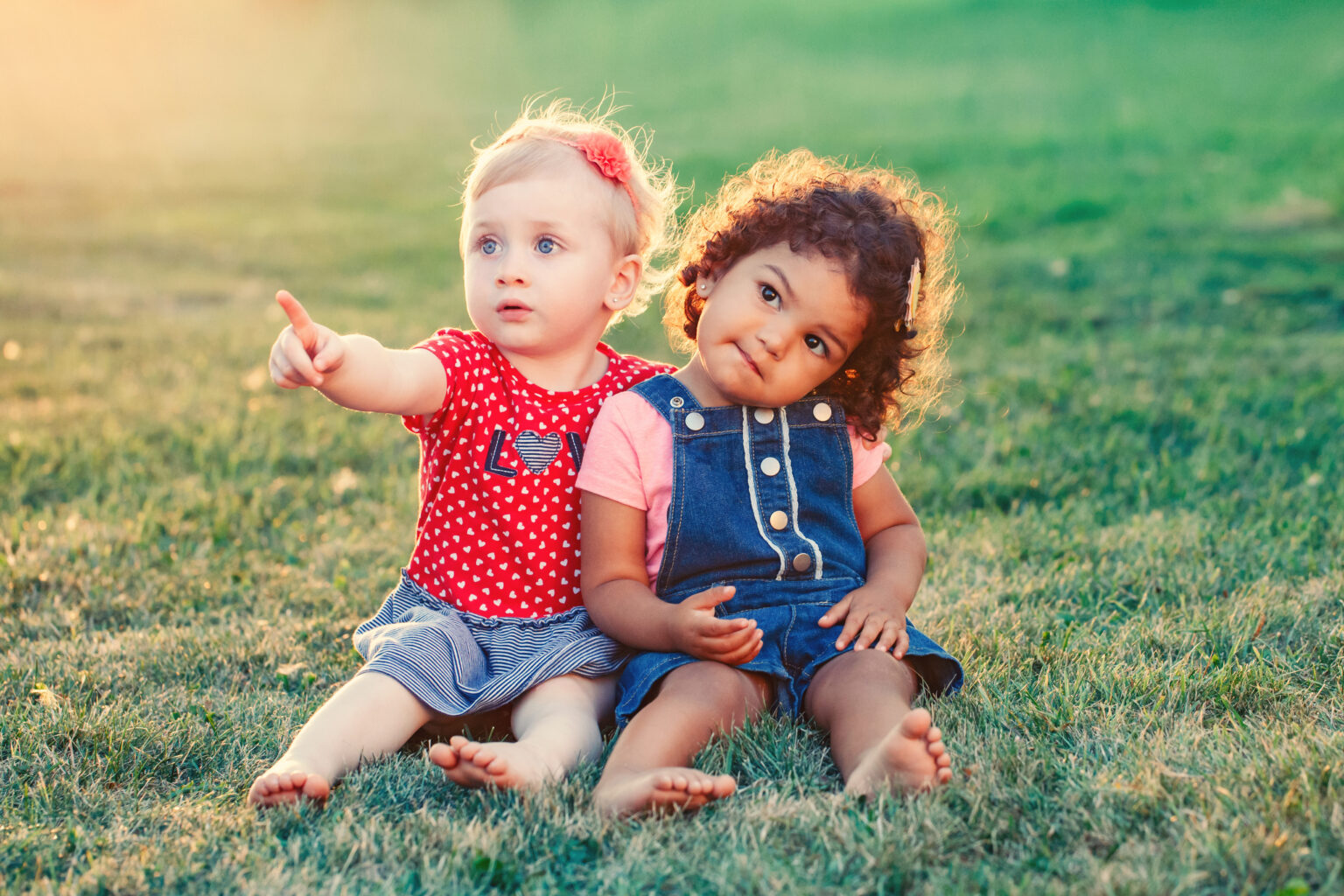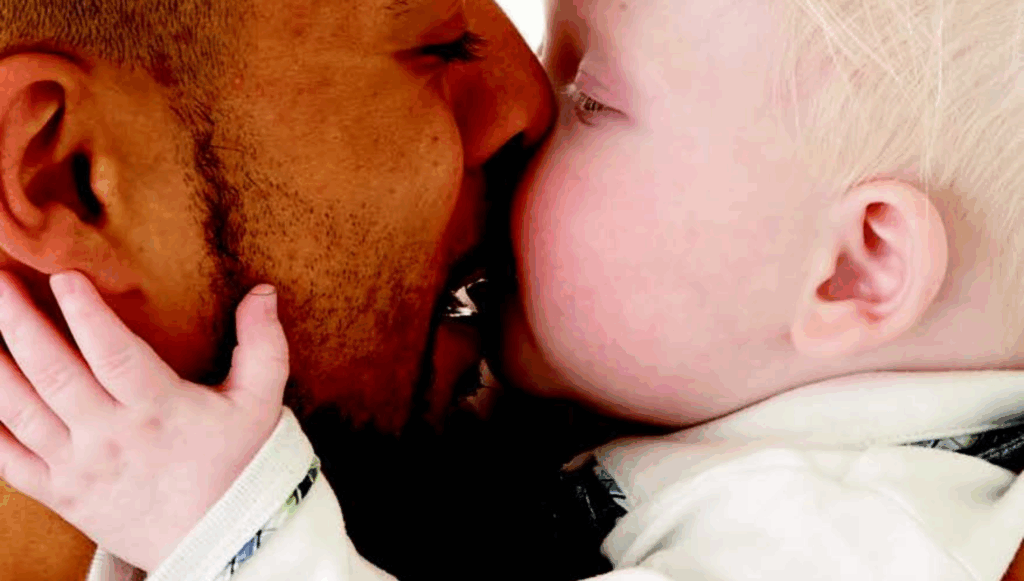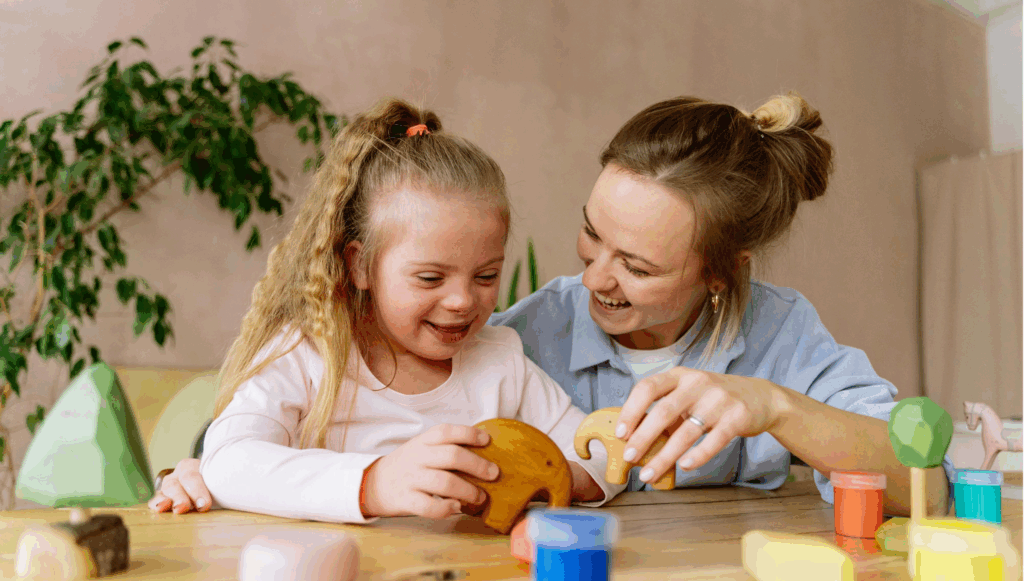Each child brings with them different early experiences of family, home and life that make them unique, and these differences should be celebrated. It is critical that children can see themselves and their family in the environment, as they need to see representations of someone who “looks like me” or “has a family structure like mine” or “has objects in their home like mine” or “lives somewhere like I do”.
Developing a sense of belonging is a fundamental aspect of inclusive practice which involves really understanding that all children and families are unique by:
- Listening to children’s voices, whether that be verbal or otherwise.
- Valuing diversity and recognising and celebrating differences in culture, language, ability, gender, sexuality, and family structure and living circumstances.
- Removing barriers and having a reflective approach, identifying and addressing physical, emotional and social obstacles that may prevent participation.
- Having high aspirations for every child by recognising and responding to each child’s unique strengths, interests, and needs, and creating opportunities that enable them to thrive and achieve their full potential.
- Supporting each unique child to learn and develop by adapting teaching strategies and the environment to meet individual needs and ensuring equitable access to learning for all children attending the setting.
- Engaging with families – establishing strong, collaborative relationships with families as a cornerstone of effective early years inclusive practice. Families are a child’s first and most influential educators, and their involvement is essential in supporting learning and development both within the setting and at home.
- Reflecting on practice and encouraging educators to examine their own biases and continuously improving inclusive approaches.
It is important to remember that the provision of equal opportunities applies to everyone who has contact with or involvement in your setting, including children, parents and families, staff, the wider community, other services and visitors to the setting.
All settings and early years educators have a duty to promote understanding and appreciation of difference and diversity. This includes developing tolerance, respect and actively celebrating diversity.
It is also not enough to be non-discriminatory in our own practice; we need to be anti-discriminatory, which means challenging others when they make discriminatory comments or act in a discriminatory way.
A commitment to valuing and respecting the diversity of individuals, families and communities must sit at the heart of early years practice. Inequalities persist in society, with far-reaching effects on children’s education, health and life chances. Early years settings have a vital role to play in explicitly addressing all forms of discrimination and prejudice.”
Useful definitions
Equality
Equality refers to the principle of ensuring that all individuals are treated with fairness and respect, and have access to the same opportunities, regardless of their background, identity, or personal characteristics. It involves removing barriers and addressing systemic and historical disadvantages that may prevent individuals from reaching their full potential. Crucially, equality is not about treating everyone identically, but about providing tailored support and resources to ensure that each person has an equitable chance to succeed.
Equity
Equity involves providing varying levels of support based on individual needs, with the aim of achieving outcomes that are comparable across all individuals. It acknowledges that personal characteristics, such as cultural background, disability, socioeconomic status, or language, can present unique barriers. Equitable practice therefore requires tailored interventions that respond to the specific circumstances of each person, rather than applying standard solutions based solely on broad categories.
“Equality is giving everyone a shoe, whereas equity is giving everyone a shoe that fits” (Susan K Gardner, Oregan University).
Inclusion
Inclusion is the intentional practice of creating environments in which all individuals feel respected, valued, and empowered to participate fully, regardless of their differences. It goes beyond simply acknowledging diversity; it actively embraces it, ensuring that everyone has equitable access to opportunities and resources. Inclusive environments foster a sense of belonging and work to identify and remove barriers that may prevent full engagement or contribution.
Discrimination
- In the UK, 45% of adults report experiencing discrimination at work or during a job search, according to a 2025 survey by Ciphr. Ethnic minorities, women, and younger people are disproportionately affected, with 76% of Black respondents and 65% of Asian respondents experiencing discrimination, while women are almost twice as likely as men to report being denied a job due to gender. Discrimination is also prevalent in other sectors, with 22% of people from ethnic minorities and 18% of disabled people reporting discrimination by NHS staff in a recent survey.
- Among the 14.2 million people found to be in relative poverty after housing costs, 25% were in food insecure households, including 33% of children.
- 70% of young people from an ethnic minority background have experienced prejudice or discrimination – and 33% of young people have experienced racist remarks, jokes, or ‘banter’ directed towards them in the workplace
- Of hate crimes reported to police in 2023: 109,843 were racially motivated, a 19% increase since 2022; Disability-linked hate crimes increased from 12, 552 to 14,242 in the same period; LGBTQ+ hate crimes increased from 15,272 to 17,135 with awareness that hate crimes are very under reported, especially those that are LGBTQ+ linked
- 62% of Gypsies and Travellers had experienced a racial assault, which was the highest out of all minority ethnic groups surveyed, and 47% of Roma people had been racially assaulted (35% of which was a physical attack).
- Nearly nine out of ten people with mental health problems say that stigma and discrimination have a negative effect on their lives.
Legal frameworks
Equality Act 2010
In the UK, the Equality Act 2010 is the primary piece of legislation that protects people from discrimination in almost all aspects of public life. It defines nine protected characteristics—including age, disability, race, sex, and sexual orientation—and makes it unlawful to treat someone less favourably because of these characteristics. The Act applies to areas like work, education, and the provision of goods and services, and is enforced by the Equality and Human Rights Commission (EHRC).
UNCRC
The UNCRC, or United Nations Convention on the Rights of the Child, is an international treaty adopted in 1989 that sets out the fundamental human rights of children under the age of 18. It establishes that children are rights-holders and outlines a wide range of economic, social, civil, and political rights, such as the right to education, health, play, and protection from violence and exploitation. The UNCRC includes four guiding principles: non-discrimination, the best interests of the child, survival and development, and respect for the child’s views.
Want to find out more?
Inclusive practice training package
Our inclusive practice training package a bespoke in-house CPD programme that you can tailor to meet your setting’s needs and includes:
- An introduction to working with children with SEND
- Supporting children for whom English is an additional language
- Becoming actively anti-racist
- Nurturing sensory wellbeing in an inclusive environment
- Understanding behaviour in the early years
- Supporting wellbeing through a gender inclusive curriculum – challenging stereotypes in the early years
To find out more and to discuss your individual requirements, please fill out our enquiry form.






